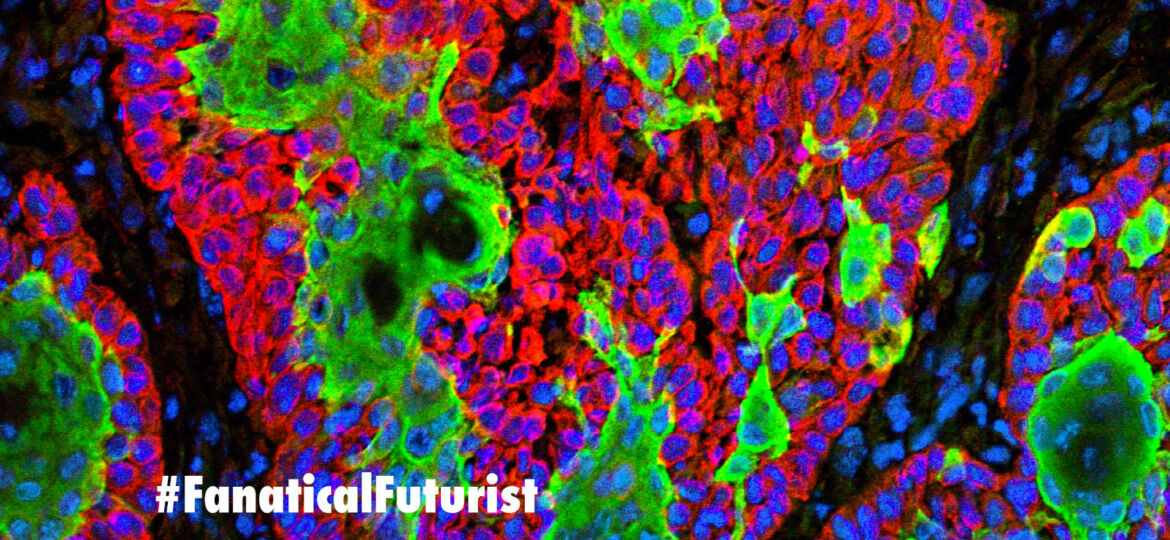
WHY THIS MATTERS IN BRIEF
Until now it has been hard, almost impossible, to identify how Cancer spreads around the body, and that’s made metastasising cancers harder to treat.
Following on from a recent announcement from another team that they’ve managed to use a simple blood test to detect cancer in a persons blood stream years before it becomes a real threat, a team from Rutgers University in the US, whose colleagues also have grand plans, but this time to re-freeze the arctic, have announced they’ve created a new method for detecting tiny cancerous tumours within people’s bodies. Using light emitting nanoparticles the teams technique can accurately identify and track early stage tumours months before they grow large enough to be detectable by conventional imaging methods, giving patients more time to have them treated, and dramatically increasing the chances of that treatments’ success.
One of the major downsides of current cancer diagnosis technologies is that a tumour can often grow to a damaging size by the time conventional imaging methods are able to detect it, and catching a cancer when it metastasizes can also be tricky as doctors generally won’t know the disease has spread until it’s too late.
This new detection method involves injecting a subject with nanoparticles that emit short wave Infrared (IR) light. The nanoparticles travel through the bloodstream and are designed to stick to specific cancer cells. In early mouse experiments the new nanoparticles accurately identified and tracked breast cancer cells as they spread to several other locations in the animal’s body.
“We’ve always had this dream that we can track the progression of cancer in real time, and that’s what we’ve done here,” says the author of the study Prabhas Moghe, “we’ve managed to track the disease in its very incipient stages.”
The new imaging technology excitingly promises a kind of real-time tracking of cancer cells and the researchers suggest this method can be used to detect most types of cancer.
“Cancer cells can lodge themselves in different niches in the body, and our nanoparticle ‘probes’ can follows the spreading cells wherever they go,” said Vidya Ganapathy who also worked on the project, “you can [now] treat the tumours intelligently because now you know the address of the cancer.”
Perhaps most inspiring is the suggestion this technology could be available in less than five years, allowing doctors an unprecedented ability to catch and track cancers more effectively, and more importantly, much earlier, than ever before.
“The Achilles’ heel of surgical management for cancer is the presence of micro metastases,” explains Ganapathy, “this is also a problem for proper staging or treatment planning. The nanoprobes described in this paper will go a long way to solving these problems.”
The study was published in the journal Nature Biomedical Engineering.

















[…] have experimented with a range of ways to temporarily pry open the barrier, including magnetic nanoparticles, ultrasound pulses, or specialized nanoparticles designed to slip through and deliver […]